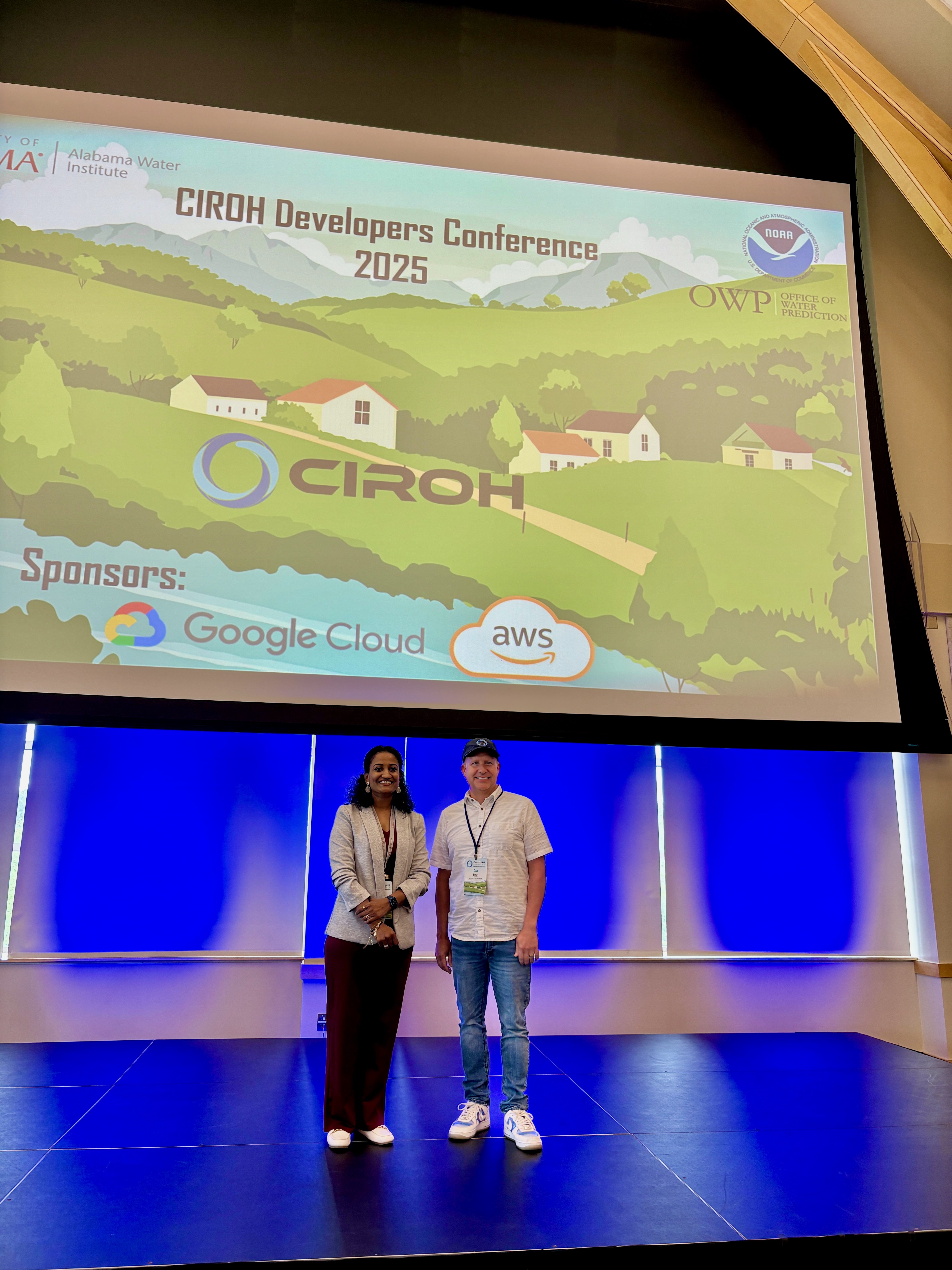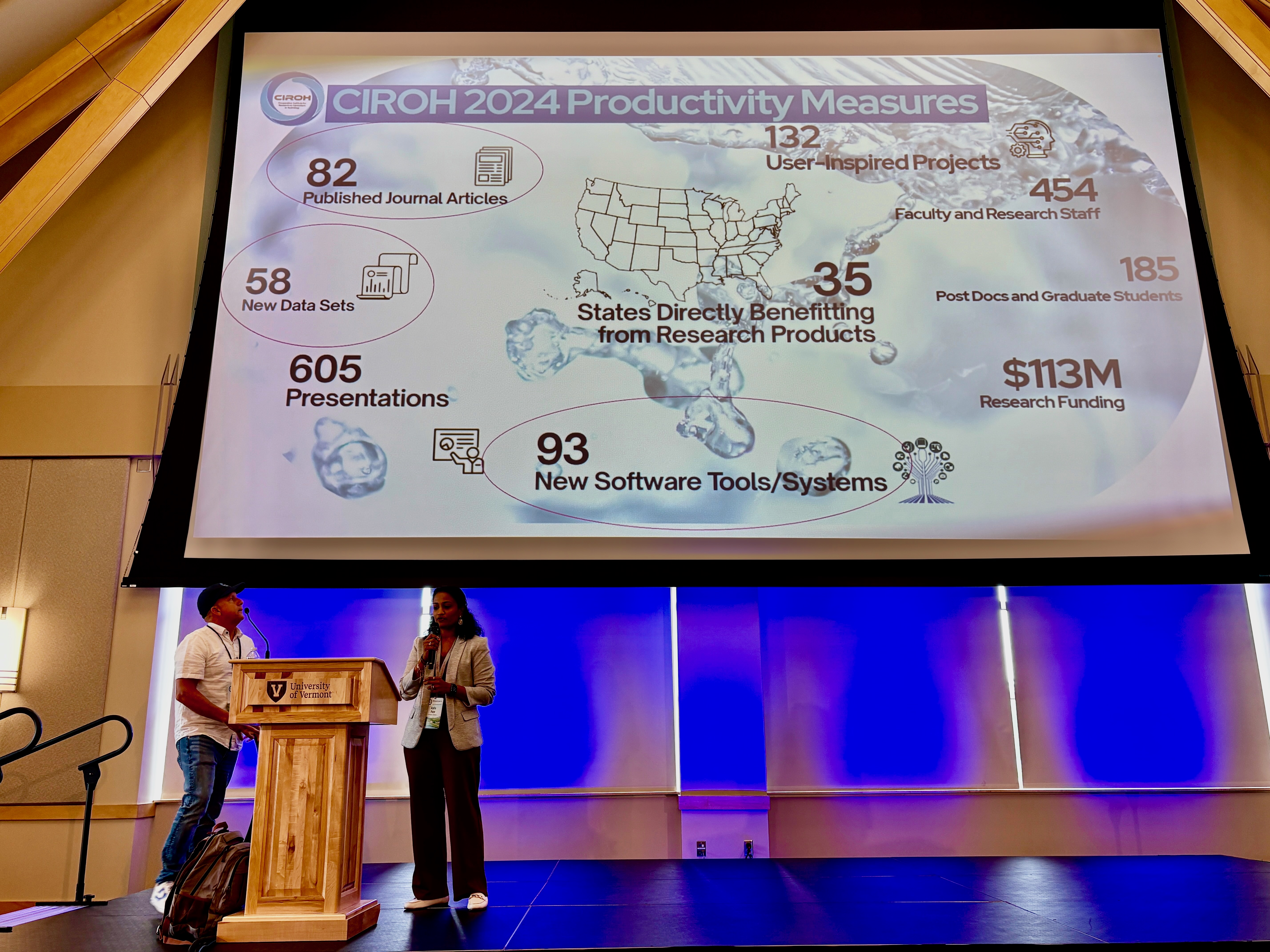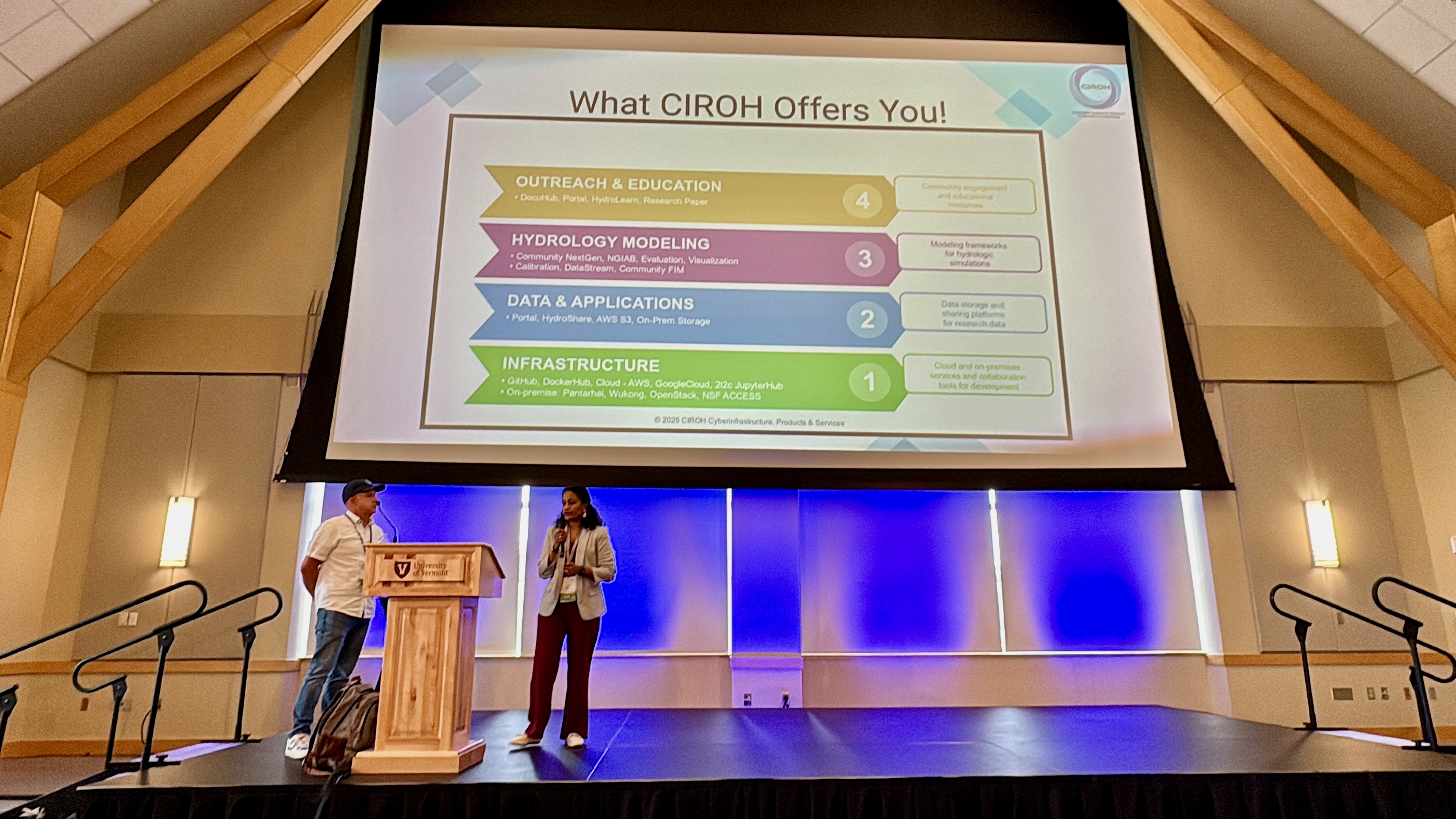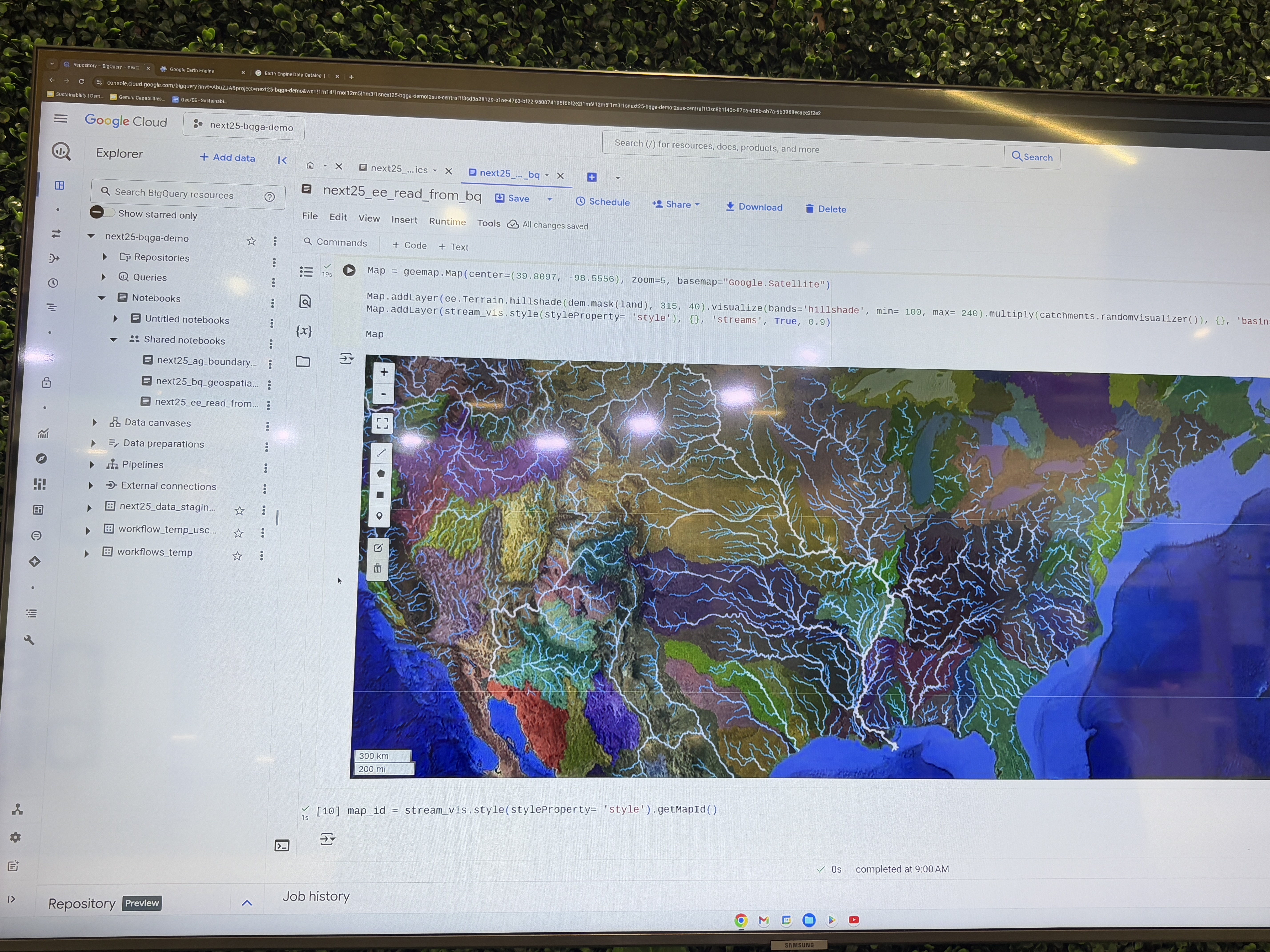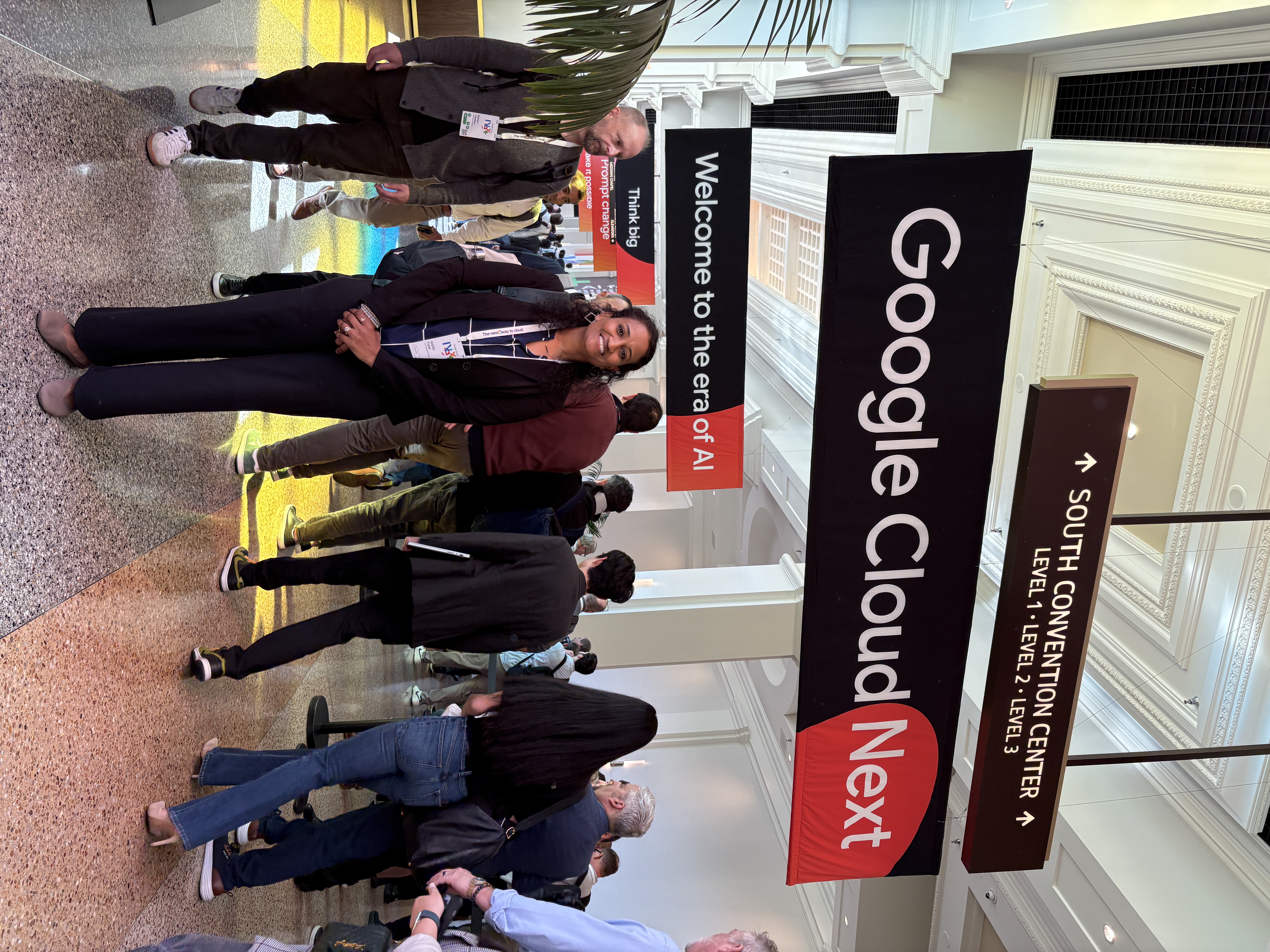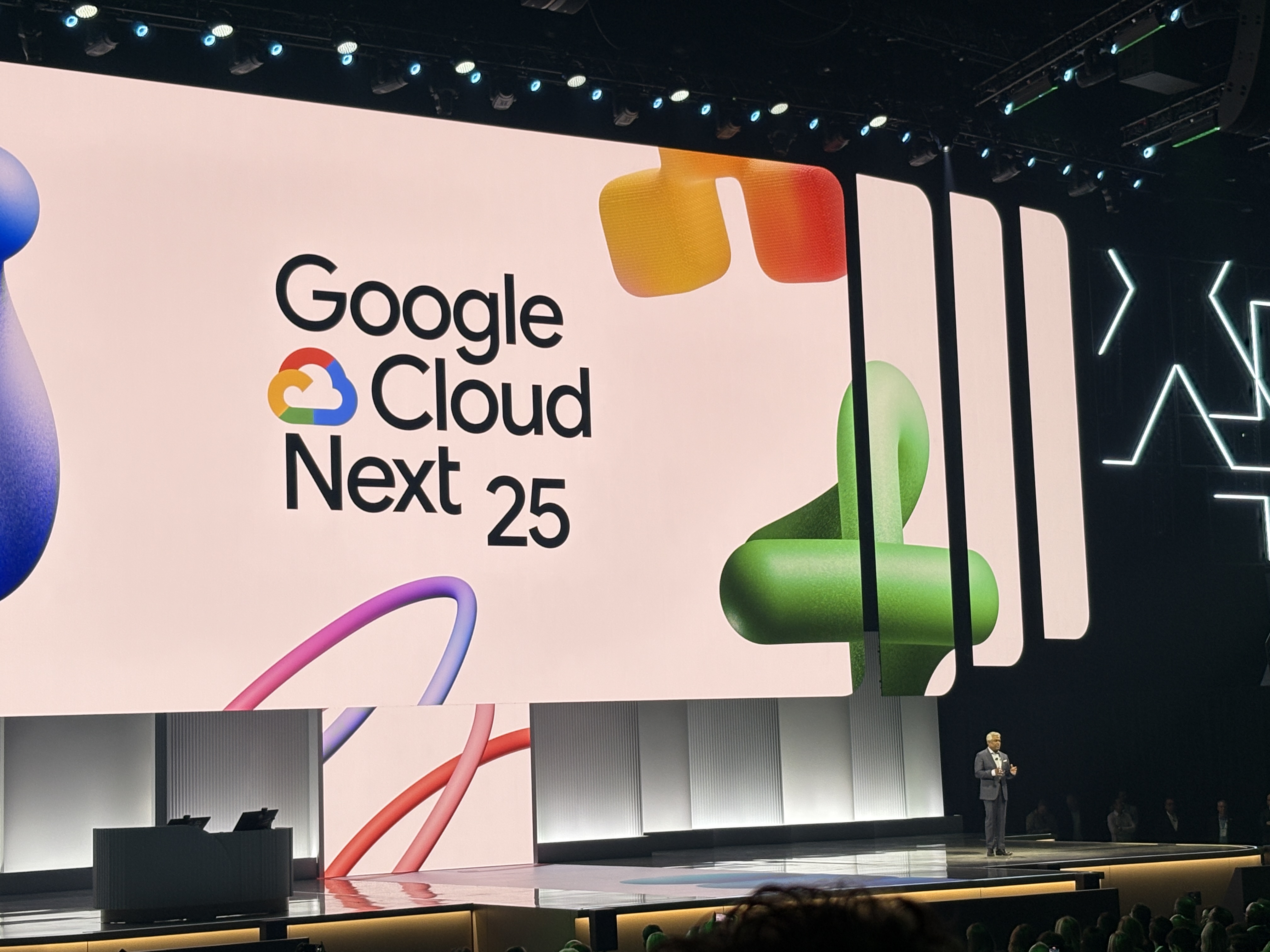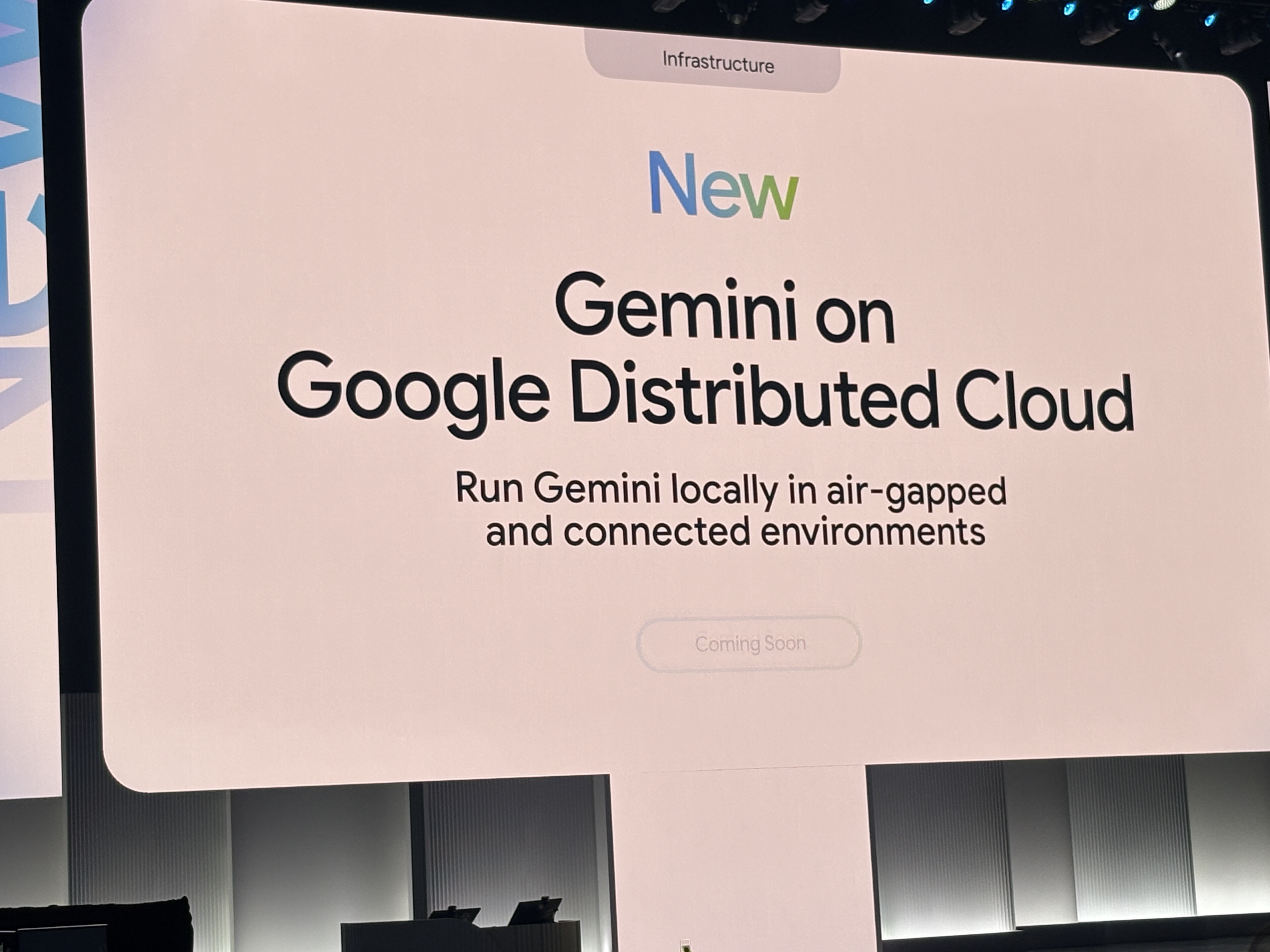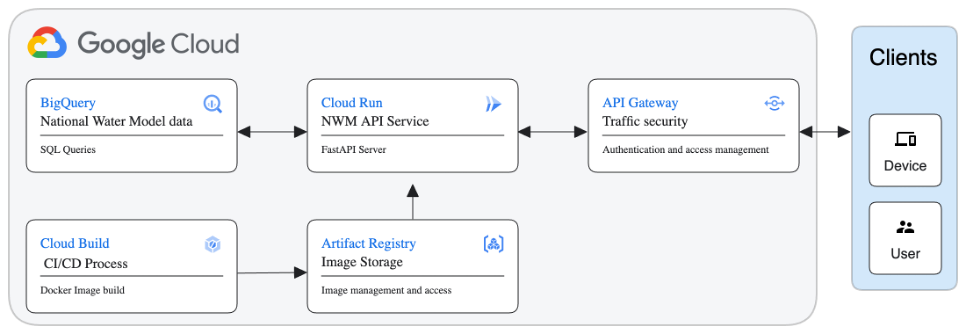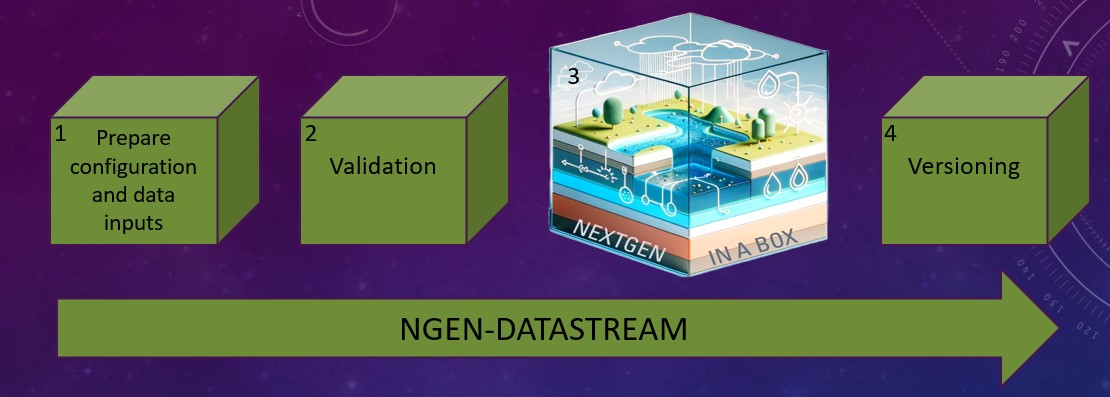DevCon 2025: A DevOps and Cyberinfrastructure Success Story
The recent DevCon 2025 event showcased not just cutting-edge development practices, but also demonstrated how modern DevOps principles and cloud infrastructure can seamlessly support large-scale technical workshops. Our team had the privilege of providing IT infrastructure and support for over 200 attendees, creating a robust learning environment through an exemplary public-private partnership.
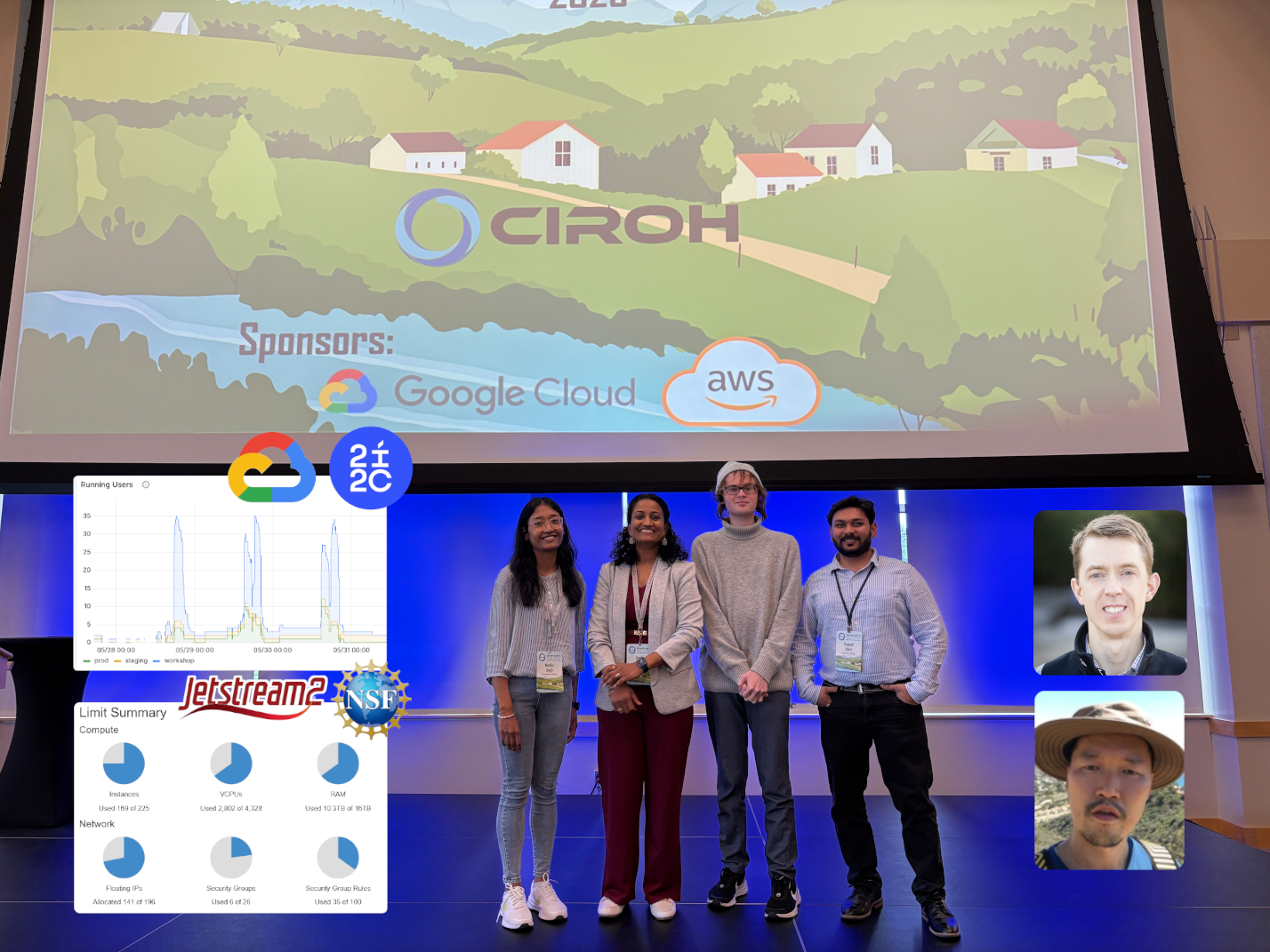
CIROH's Research Cyberinfrastructure and DevOps team.
Left to right, top to bottom:
Manjila Singh, Arpita Patel, Nia Minor, Trupesh Patel, James Halgren; Benjamin Lee.

